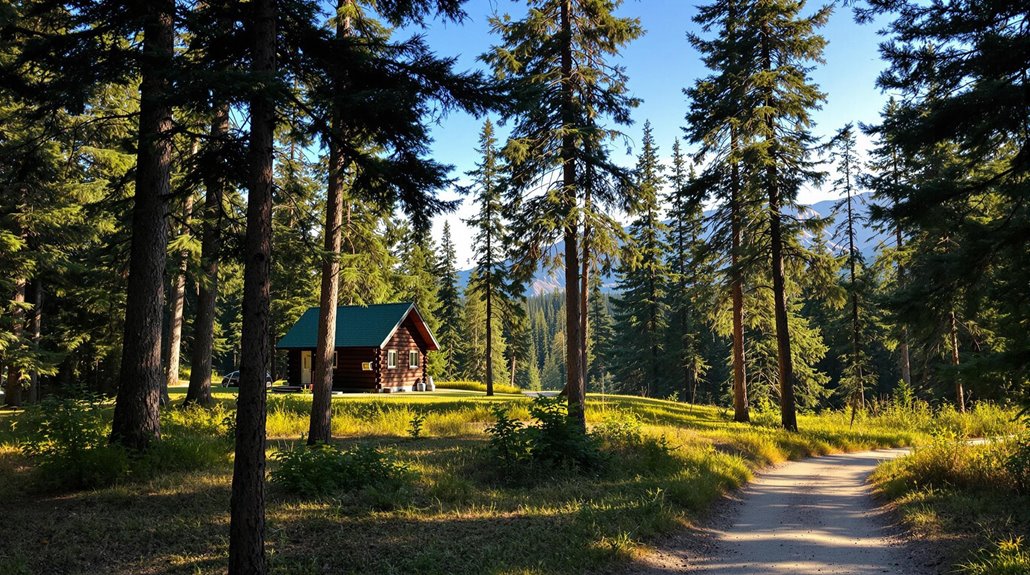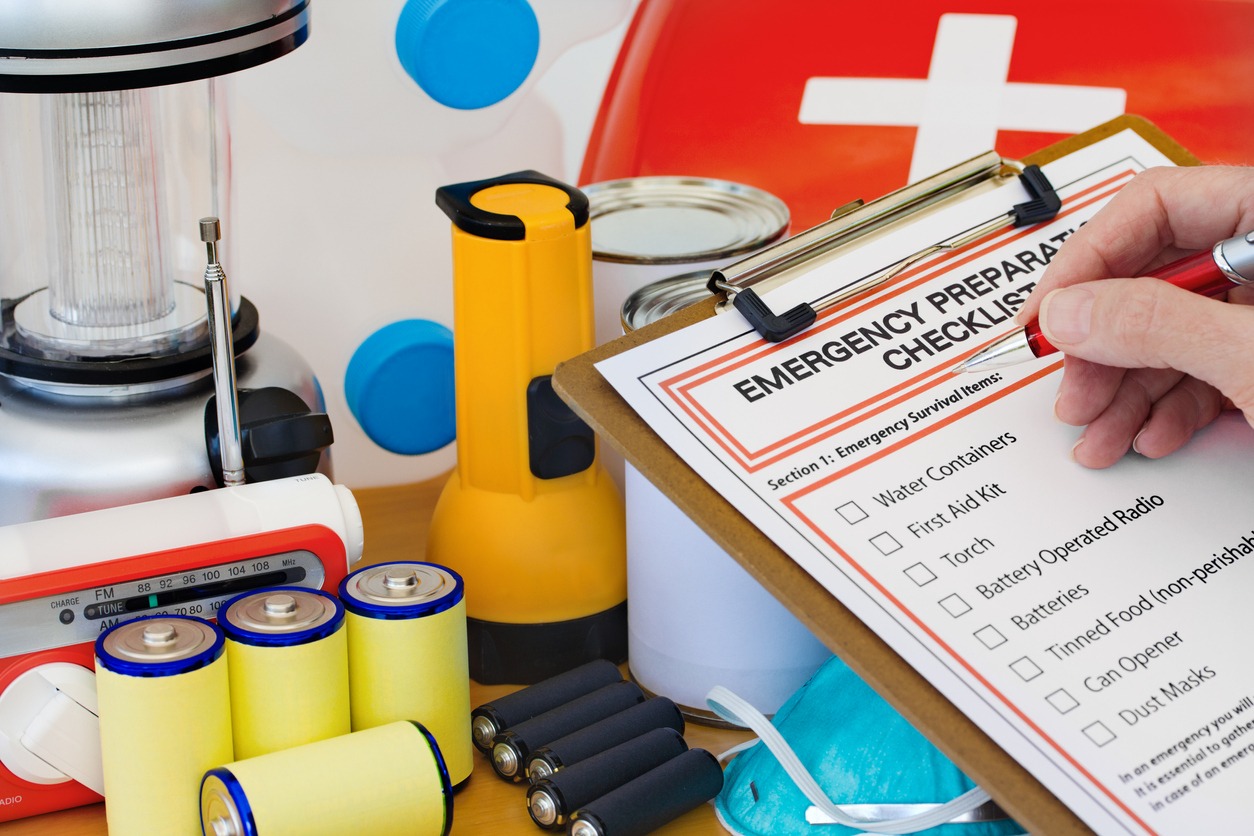The Role of Proximity: How Far Should Your Bug-Out Location Be?

Your bug-out location should balance being far enough from threats and close enough for a quick escape, typically within 40 to 100 miles from home. This distance allows for manageable travel, ideally around 2.5 to 3 hours, avoiding travel fatigue. Confirm it's located away from major roads by at least 10 miles to dodge chaos and consider multiple transport options. A nearby natural water source and a solid supply plan are vital for sustainability.
Don't overlook local legal guidelines or environmental hazards that might affect long-term feasibility. There's more to uncover about choosing an ideal bug-out spot safely and effectively.
Understanding Ideal Distances
When planning your bug-out location, understanding ideal distances is crucial to guarantee safety and accessibility during emergencies. You want a natural balance between being far enough to escape immediate threats and close enough to reach quickly. A distance of 40 to 100 miles from your primary residence is recommended. This range keeps you within a reasonable 2.5 to 3 hours of travel time, helping you avoid undue fatigue while reaching your safe haven.
Your bug-out location should be a secure retreat with a reliable water source and good security measures. Shorter distances, such as within 12 miles, offer quick access during immediate threats like wildfires. However, longer distances are preferable for larger-scale evacuations, shielding you from widespread disasters. Historical evacuation insights emphasize maintaining a buffer zone of at least 10 miles from major roads. This reduces the risk of getting caught up in chaos, providing a layer of security.
Consider local terrain and environmental conditions as they impact how effectively you can reach your bug-out location. Understanding these natural elements guarantees your chosen site remains accessible and secure, regardless of the disaster scenario you're facing. It's essential to have an evacuation plan that includes designated meeting locations and exit paths in all directions to ensure a smooth evacuation process.
Accessibility and Transportation
Having pinpointed the ideal distance for your bug-out location, it's crucial to contemplate how you'll actually get there. Accessibility becomes a critical factor, especially when emergencies demand quick evacuation. Confirming your bug-out location is within a 40 to 100-mile range strikes a balance between safety and travel efficiency.
You'll want to evaluate multiple transportation options to guarantee you can reach your destination under different conditions. Personal vehicles might seem the fastest, but don't overlook bicycles or even designated emergency routes, which can offer flexibility if roads become congested or impassable.
Be proactive in analyzing potential roadblocks, along with weather conditions and terrain obstacles, that could impede your expedition. The last thing you want during an evacuation is to be stuck because you didn't plan for alternative routes. Keep in mind that travel times can vary enormously during crises, so practice different routes to see which offers the quickest and safest passage to your bug-out location.
Safe generator use is essential during power outages, ensuring appliances and emergency systems function without compromising safety. Ultimately, by evaluating all possible transportation options and scenarios, you confirm that when the moment comes, you're ready to navigate swiftly toward safety, avoiding unnecessary delays and hazards.
Water Source Considerations

A reliable water source is perhaps the most essential element of any bug-out location. Without access to clean water, your survival retreat could quickly become uninhabitable. When scouting for bug-out locations, prioritize proximity to natural water sources like springs or rivers. These sources are priceless, especially during natural disasters when municipal supplies may fail. However, don't just settle for any water body; assess the potential for pollution. Implement purification methods to guarantee all water is safe to drink.
Consider using solar disinfection methods as a viable option for making water potable, especially in sunny regions where traditional treatment options are not feasible. Seasonal changes can drastically affect water availability and quality. Confirm your bug-out location includes plans for water storage to tide you over during dry spells. Understanding local rainfall patterns can help you set up effective water harvesting systems, improving your supply resilience.
Legal access to water is another significant factor. Investigate any water rights issues to avoid future conflicts over access. This due diligence is essential for the long-term sustainability of your retreat. Remember, the right water source not only supports daily needs but also increases the overall viability of your location. With careful planning and consideration, you can guarantee your survival retreat remains a safe haven, no matter what challenges arise.
Self-Sufficiency Essentials
Establishing self-sufficiency at your bug-out location requires a thorough assessment of natural resources like freshwater, arable land, and wildlife. Being in a remote location with limited resources means you'll need to take advantage of every available asset. Start by securing access to natural water sources and fertile soil for sustainable food production.
Implement organic gardening and consider raising livestock to maintain a steady food supply, reducing your dependency on external resources. Consider growing winter crops like spinach that can thrive in cooler climates and provide essential nutrients. Renewable energy solutions like solar panels are vital for maintaining power independence. They can provide electricity without relying on the grid, making your bug-out location more resilient during emergencies.
Developing skills in resource management and survival techniques will help you make the most of what your environment offers. Foraging and hunting can supplement your food sources, while efficient use of resources guarantees sustainability. Connecting with nearby communities can improve your self-sufficiency efforts. Knowledge sharing and resource pooling can provide support you might not have alone. Consider these necessities to optimize your self-sufficiency:
- Natural water sources: Secure a reliable supply of clean water.
- Solar panels: Harness renewable energy.
- Organic gardening: Grow your own food.
- Local community engagement: Share knowledge and resources.
Shelter and Security Needs

Guaranteeing your bug-out location is equipped with robust shelter and security features is fundamental for survival during emergencies. Your chosen shelter should withstand local threats like hurricanes, earthquakes, or wildfires, providing a safe haven. It's imperative to situate your bug-out location away from densely populated areas to reduce the risk of attracting unwanted attention. This isolation improves security, keeping you safer from intruders and wildlife.
To further strengthen security, consider incorporating reinforced structures and natural barriers. These measures deter potential threats, confirming your bug-out location remains a secure refuge. Camouflage and concealed entrances also play an important role in addressing visibility issues, making your shelter less obvious to outsiders. This stealth approach helps maintain privacy and reduces vulnerability.
Implementing perimeter security plans is another key aspect of a well-protected bug-out location. Surveillance systems and emergency exit strategies are critical for monitoring your surroundings and providing quick evacuation options if needed. By taking care of these fundamental security features, you guarantee that your shelter remains a safe, reliable option during emergencies. Additionally, having access to emergency rations that can sustain you for a week to several months is crucial for long-term survival. Ultimately, a well-prepared bug-out location can greatly improve your safety and peace of mind in crisis situations.
Legal and Environmental Factors
Navigating the legal and environmental factors of your bug-out location is vital for long-term sustainability and compliance. To make your location truly viable, you need to know the local zoning laws, which dictate permissible activities like building structures or gardening. Confirm you're far enough away from areas with strict regulations that could limit your intended activities. Understanding water rights is pivotal for accessing nearby water sources legally. Weather changes can also impact water availability, so plan accordingly.
- Zoning Laws: Determine what structures and activities are permissible to avoid future legal troubles.
- Water Rights: Secure legal access to water sources; regulations vary and are crucial to survival.
- Agricultural Restrictions: Know the types of crops and livestock allowed to guarantee compliance.
- Financial Implications: Be aware of permits and potential fines that your location requires for budgeting.
Environmental regulations are similarly significant, promoting sustainable practices and preventing conflicts with authorities. Your bug-out location requires careful consideration of these factors to confirm that you're not only prepared for emergencies but also compliant with local laws. By understanding these elements, you'll create a sustainable and secure haven that meets all legal and environmental requirements.




